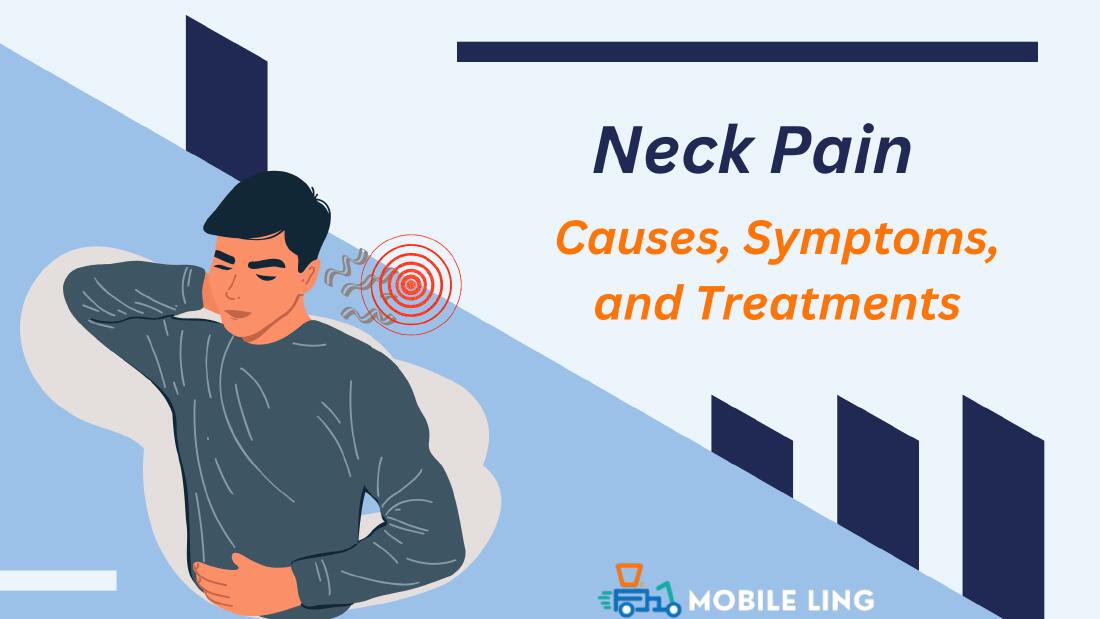Neck pain is a prevalent condition that affects many people at some time in their life. It is caused by a variety of circumstances and may have a substantial influence on one’s everyday activities and general well-being. That is why many people wonder, ‘how to treat neck pain quickly at home’.
In this article, we will look at the causes and symptoms of neck pain, as well as preventative measures and successful non-surgical and surgical treatment options for neck pain. Furthermore, we will concentrate on a particular non-surgical therapy approach known as the Cervical Device, which has been shown to be effective in relieving neck discomfort.
Neck Pain Causes:
Discomfort may be caused by a variety of factors, including:
- Poor posture, overuse, and rapid movements may all strain the muscles of the neck, causing pain and discomfort.
- Poor Ergonomics: Neck discomfort may be caused by incorrect sitting or sleeping postures, unsuitable workstation arrangement, and a lack of neck support.
- Cervical Radiculopathy occurs when nerves in the neck get crushed or inflamed, resulting in radiating pain, tingling, or numbness that may spread to the shoulders, arms, and hands.
- Degenerative Disc Disease: The aging of the spinal discs may cause neck discomfort, stiffness, and decreased movement.
- A herniated or slipped disc in the neck may cause discomfort in the neck as well as symptoms such as arm weakness, tingling, and numbness.
Neck Pain Symptoms Include:
Stiffness and restricted range of motion.
Pain that intensifies with movement or participation in specific activities.
Headaches, particularly those emanating from the base of the skull.
Spasticity and stiffness in the neck and upper back.
Pain, tingling, or numbness radiating from the shoulders, arms, or hands.
Neck Pain Preventive Measures:
Consider the following preventative strategies to lower your chances of having or aggravating neck pain:
Maintain Good Posture: Whether you’re sitting or standing, be sure your neck and spine are aligned. Avoid slouching or craning your neck forward for long periods of time.
Ergonomic Workstation: To reduce neck pain, set up your workstation ergonomically, with an adjustable chair, optimum desk height, and a monitor positioned at eye level.
Take frequent pauses: If your job requires you to sit for lengthy periods of time, take frequent pauses to stretch your neck and shoulder muscles.
Supportive Pillow: While sleeping, choose a pillow that supports the natural curvature of your neck. Choose a pillow that is appropriate for your sleeping posture.
Gentle Neck Exercises: Include gentle neck exercises and stretches on a daily basis to increase flexibility and strength in the muscles that support your neck.
prevent Heavy Lifting: Use correct lifting methods when lifting goods to prevent hurting your neck or back.
Non-Surgical Neck Pain Treatment Options:
Heat/Cold Therapy and Rest:
Taking a break from aggravating activities and applying heat or cold packs to the afflicted region might give temporary relief.
Cervical Implant:
The Cervical Device is a non-surgical therapy alternative for neck discomfort that gently stretches and decompresses the cervical spine. It is simple to apply and gives focused relief.
Physical Therapy (PT):
Physical therapy for cervical radiculopathy is another helpful treatment for neck discomfort. To treat neck discomfort, a trained physical therapist may build a specific exercise program that combines stretching, strengthening, and posture correction.
Pain relievers:
Nonsteroidal anti-inflammatory medicines (NSAIDs) or analgesics, which are available over-the-counter, may help relieve pain and inflammation. They should, however, only be used under physician supervision. Pain O Soma 500mg is used to treat neck pain.
TENS (Transcutaneous Electrical Nerve Stimulation):
TENS treatment uses low-voltage electrical currents to reduce pain and induce muscular relaxation.
Acupuncture:
This ancient Chinese method involves placing small needles into certain places on the body in order to activate the body’s natural healing response and reduce pain.
Massage Treatment:
Massage therapy may help relax stiff muscles, enhance blood circulation, and alleviate neck discomfort.
Neck Pain Surgical Treatment Options:
Discectomy and Fusion of the Cervical Spine:
The injured disc is removed and neighboring vertebrae are fused to stabilize the spine and relieve neck discomfort during this surgical surgery.
Synthetic Disc Replacement:
A damaged disc is replaced with an artificial disc in this operation, retaining mobility in the neck while lowering discomfort and maintaining spine stability.
Decompression and Fusion of the Anterior Cervical Spine:
This operation uses bone grafts and plates to alleviate pressure on pinched nerves and stabilize the spine.
Muscle relaxants and pain relievers:
Nonsteroidal anti-inflammatory medicines (NSAIDs) to relieve neck pain and inflammation, as well as muscle relaxants to aid in the healing of neck muscles, are frequent first-line therapies for neck discomfort. Soma 500mg is used to treat muscle relaxants.
Conclusion:
Neck pain may have a substantial influence on one’s quality of life, but there are effective neck pain management solutions available to help relieve the agony. You may lower your chance of experiencing neck discomfort by taking preventative actions such as keeping appropriate posture, performing mild workouts, and utilizing supportive cushions.
Rest, heat/cold therapy, physical therapy, and the use of the Cervical Device are all non-surgical therapies that provide good relief. When non-surgical methods fail, surgical therapies such as cervical discectomy and fusion or artificial disc replacement may be explored. To find the best treatment approach for your unique disease, always speak with a healthcare expert. With the appropriate method, you may discover quick relief and live a pain-free life.
Also Read:
- Glimmer And Glow: Enhance Your Decor With Metallic Balloons
- 92Career: Unlocking Career Growth In The Digital Age




